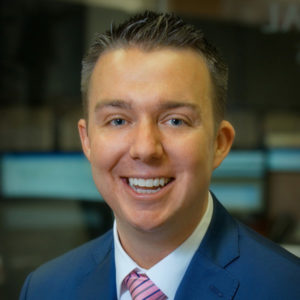There’s a scene in the 2004 movie, Along Came Polly, when an unemployed actor named Sandy Lyle (Philip Seymour Hoffman) is stalking an executive suite like a big-game hunter on the Serengeti. His prey is a conference table filled with dour-looking insurance executives. Yes, you know who you are. The mission: to convince these insurance bigwigs that they should agree to underwrite a policy to the tune of $50 million to protect his buddy, Leland Van Lew (Bryan Brown), a base-jumping, crocodile-wrestling, shark-diving, volcano-luging, snake-wrangling CEO. Van Lew makes Richard Branson look like an introvert.
It’s a scenario that’s played out on a regular basis in the C-Suite in companies throughout the world as traditional insurance can no longer keep up with the executive that craves danger and excitement along with his morning cup of coffee. And that excitement always appears to be reaching new levels of danger.
Years ago, it was scary when the head of a company trekked up to the top of Mount Everest to bask in the serenity of the open air. Unfortunately, that journey might have been a cakewalk in comparison to what’s happening now. These days, that journey up to the summit is being shared by a virtual conga line of adventurers, all jockeying for a spot at the top of the world. We now witness lines stretching to the top, taking on Disney World-like proportions with people waiting up to two hours to partake in their little piece of history. The result? In 2019 alone, there were 11 deaths among those who undertook the journey. And it’s not just falling off the mountain that can claim a life. German climber Ralf Dujmovits says that long queues at the summit can be hazardous because “when people have to wait in queues, they risk running short of oxygen — and may not have enough oxygen left on their way down.”
Good News-Bad News
It’s easy to focus the need for coverage on the daredevil CEO. But there are others who are equally as important, and equally as in danger. And the Richard Bransons of the world, those who need protection from outside forces, are equally as dangerous as a 26,200-foot summit. Herein lies the insurance world’s example of a good news-bad news scenario.
The good news is indeed good. Yes, cancer remains a dreaded diagnosis, but America is showing great progress against some of the most deadly forms, particularly lung cancer and the aggressive skin cancer, melanoma. Researchers have reported the largest-ever one-year decline in the U.S. cancer death rate, a drop of 2.2% between 2016 and 2017, according to the American Cancer Society. The rate has fallen resoundingly — nearly 30% — from 1991 to 2017, affecting nearly 3 million lives.
When a key person falls victim to cancer (or other fatal diseases) it can wreak havoc on a company, especially if the victim is a rainmaker whose vision drives the company’s success. And now the “bad” news. The executive doesn’t necessarily have to pass in order for it to impact a business. Medical advances have helped slow the progress of this horrific disease. But what is the impact on a company if the CEO needs to be away from their desk to undergo two years of chemotherapy? And it doesn’t even have to be a high-profile company. Every case doesn’t have to spotlight a high-profile Fortune 500 company. There are many mid-level corporations where the key person is just as valuable to the company’s mission.
Brooks Bell, the 38-year-old founder & CEO of Brooks Bell, a consulting firm in Raleigh, N.C., was recently diagnosed with stage 3 colon cancer. Bell has stepped down from her duties as CEO to focus on her health. The consulting firm founded in 2003 was recently valued at over $8 million. The firm specializes in optimization services for enterprise brands with offices in Raleigh and San Francisco.
High-earning executives like Brooks Bell who have a minimum of 25 years left in their career are faced with a personal financial risk to their family’s future generational wealth and a loss of income due to a serious illness or injury. To help illustrate, let’s assume Bell earns $750,000/year, the income exposure for the next 25 years is over $18 million (not including salary increases or bonuses). What does your client own that is worth $18 million and isn’t fully insured?
High Limit Protection
Traditional U.S. insurance markets can’t provide what Bell needs to make up for potential lost wealth. Fortunately, there are products such as high limit income protection and corporately owned key person disability that are available to fill the financial abyss that can occur in her lifestyle and protect her business should she be unable to perform her executive duties.
True, many key persons are protected by life insurance, or at the very least a succession plan, should the key person pass away. But statistics show the risk of disability during the working years is significantly higher than the risk of death. A 45-year-old executive is three times more likely to suffer a disability lasting longer than 90 days than to die before the age of 65. It’s estimated less than 35% of the corporations that secure key person life insurance secure the corresponding key person disability coverage primarily because the company’s board or chief financial officer (CFO) is unaware a key person disability policy is available. In either circumstance, the corporation faces significant loss. Let’s look at another example of how things could potentially go south without the right protection in place.
As a team, the CEO and CFO of a Texas-based hospital network with $4 billion in revenue were responsible for aggregating and integrating hospitals into their system. These two key players were instrumental in driving deals and visualizing the hospital network’s growth. The hospital board knew it was no secret that should one or both go down due to an illness or disabling injury, the hospital would suffer significant financial implications. For these reasons, the hospital sought key person disability coverage for both the CEO and CFO. Fortunately, utilizing the unique capabilities of the Lloyd’s of London insurance market, the company procured a $30 million and a $15 million key person disability policy for the CEO and CFO respectively. The policies, payable to the hospital in a lump sum after 12 months, provided a financial cushion for the hospital board should the CEO and/or CFO be unable to perform their duties.
Evaluate Risk for High-Level Execs
Advisors need to evaluate the risk to key personnel and c-suite executives by looking at how they are leveraged against the success of the company, and the impact should they not be able to perform their duties. Ask yourself if that person left in the middle of the night, who could successfully run the company? And what would be the cost to replace that person from outside if no one was in place in-house? Or are they irreplaceable?

Another product worth investigating in this scenario is disability buy-sell coverage which, among other features, can protect private and public organizations from the risk of a career-ending disability to the owner by protecting the remaining partners and funding their financial obligations to repurchase the disabled owners’ equity shares in full. Case in point: five partners of a young successful Chicago investment firm valued at almost $40 million needed disability buy-sell coverage to fund their buy-sell agreement should either partner incur 18 months of disability. Each partner was in his 30s or 40s. The coverage fully funds the buy-out agreement in the event one of the five partners of the firm becomes permanently disabled, allowing the partners to leave their investments intact rather than drawing them down to fund their stock repurchase obligation. The partners of the investment firm now had a real solution in place in the event one of them became disabled. Furthermore, they were able to market their succession plan, promoting the firm’s stability and establishing trust while courting new investors.
But what happens when a short-term need arises for unique or catastrophic coverage to establish or supplement a company’s traditional key person life insurance should an accident befall someone resulting in death or disability? To have this happen to a key executive is a tragedy. To have it happen to five executives at the same time could be catastrophic. Picture five top executives at a privately-owned healthcare company boarding a plane bound for a private retreat in Costa Rica.
The trip will also include activities such as ATV-riding, surfing and zip lining. That’s a lot of human capital sitting together at 35,000 feet. If one or all of the executives should perish or be dismembered, the effects to the company would be catastrophic. Fortunately, all parties were able to secure a corporately-owned accidental death and accident only disability policy that covered the flights back and forth and all activities during the seven-day retreat.
Sadly, sometimes protecting the risk is more personal, and accidents are a part of life for that particular individual. But it makes the need for coverage no less critical.
Roy Halladay, an eight-time All-Star and two-time Cy Young Award-winning former pitcher of the Toronto Blue Jays and Philadelphia Phillies, died when the plane he was piloting crashed off the coast of the Gulf of Mexico in 2017. Roy Halladay’s story is a tragic reminder to others engaging in avocations like race car driving, piloting, scuba diving and mountain climbing. Accidental death insurance provides a fast and simple solution to protect your clients while participating in your high-risk passions.
In our fast-passed society where events always seem to be happening at warp speed, your clients are at greater risk today than they have ever been. The protective bubble that traditional insurance offers will only hold up so long under the relentless onslaught that daily life offers, from the urge to scale sky-high summits to traveling to and through the world’s hot zones in order to close the next big business deal. This is when you need to be certain you have the right coverage in place before it is needed.
Topics Catastrophe Natural Disasters
Was this article valuable?
Here are more articles you may enjoy.



 Wildfire Losses Drop Chubb Q1 Net Income 38%, While Tariffs Create ‘Confusion’
Wildfire Losses Drop Chubb Q1 Net Income 38%, While Tariffs Create ‘Confusion’  Allstate Agent Can Be Sued Over Nonrenewal of ‘Grandfathered’ Flood Insurance Policy
Allstate Agent Can Be Sued Over Nonrenewal of ‘Grandfathered’ Flood Insurance Policy  Questions About How a Deputy’s Stepson Became the Accused Gunman at FSU Shooting
Questions About How a Deputy’s Stepson Became the Accused Gunman at FSU Shooting  More Floridians Moving Out Due to Housing, Insurance Costs, Cotality Report Says
More Floridians Moving Out Due to Housing, Insurance Costs, Cotality Report Says 



